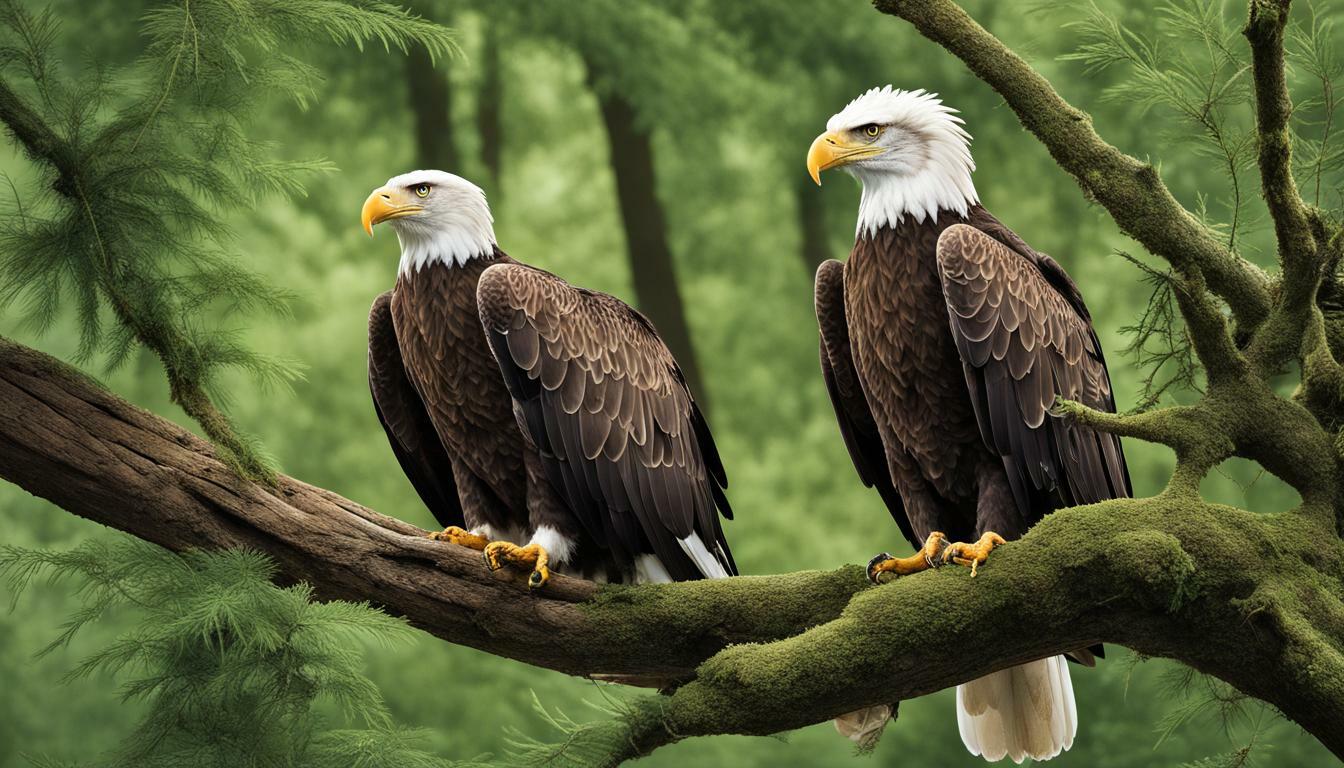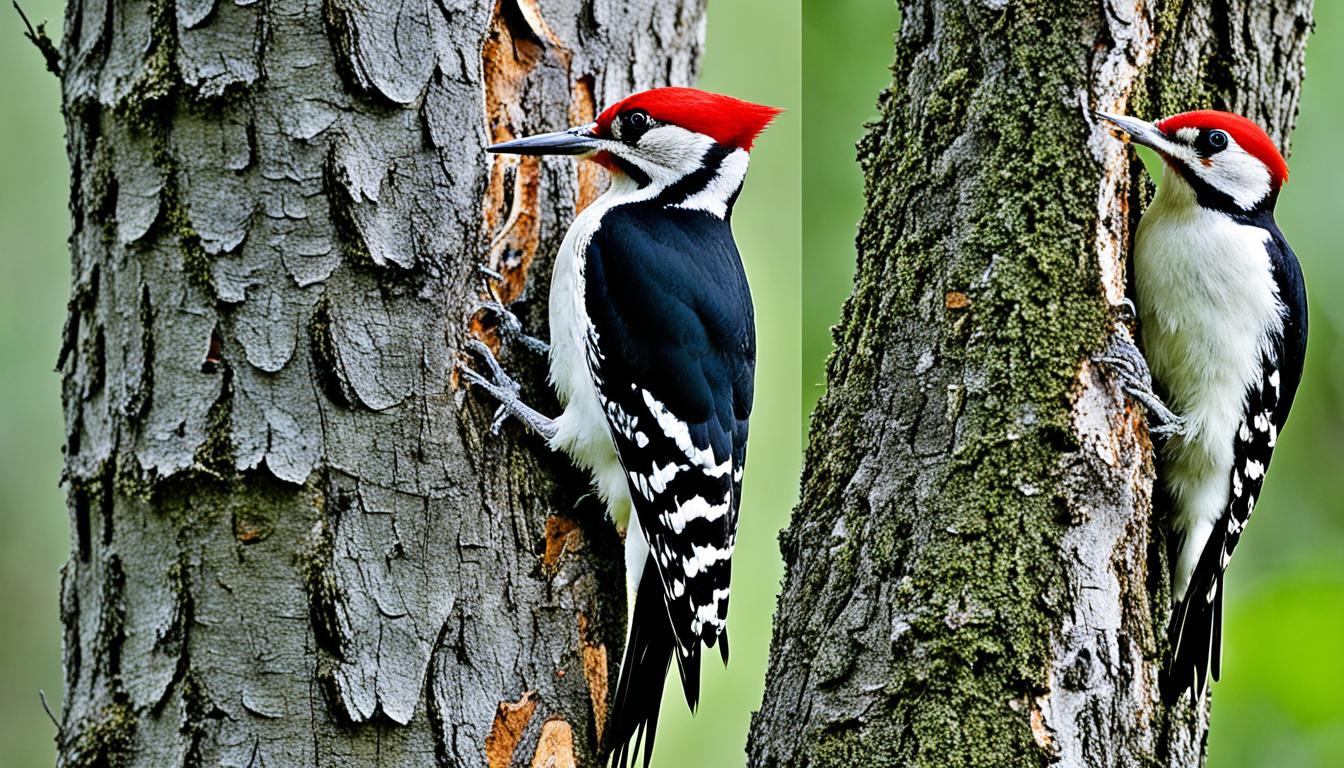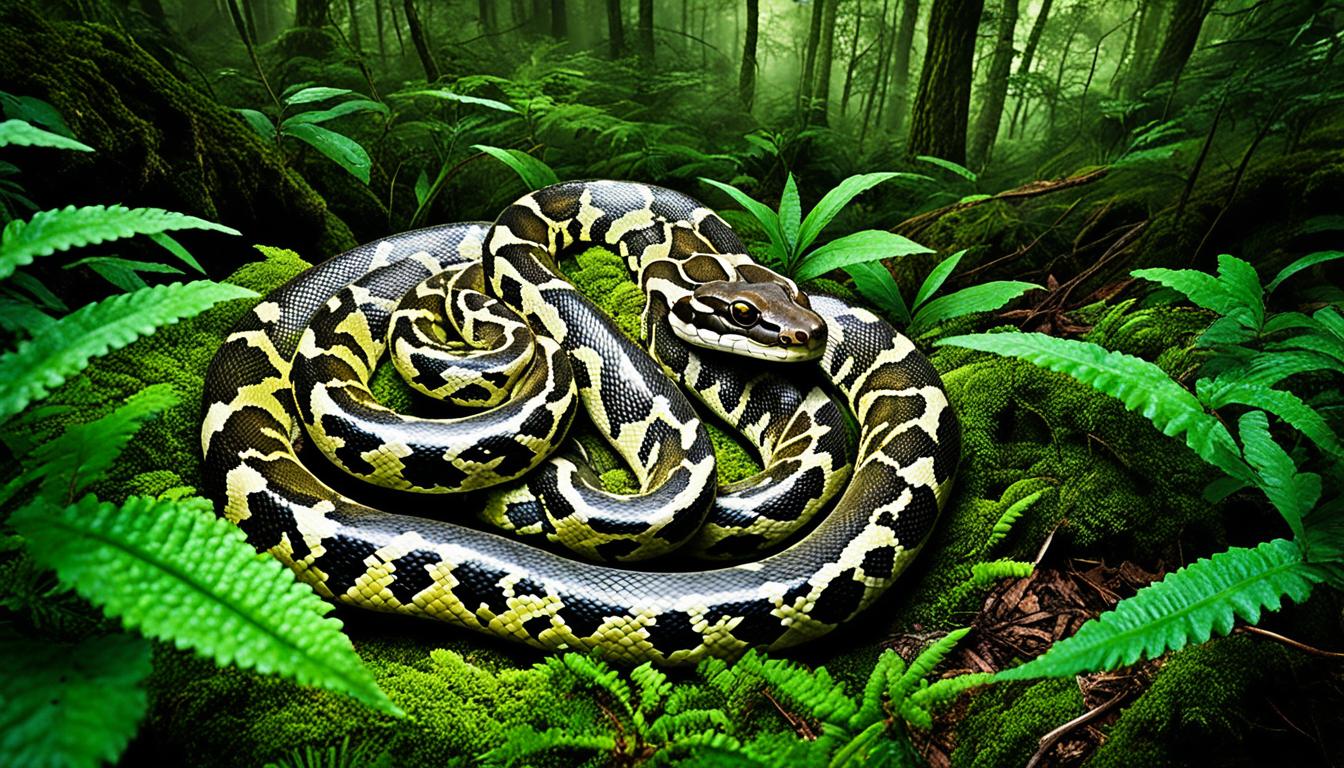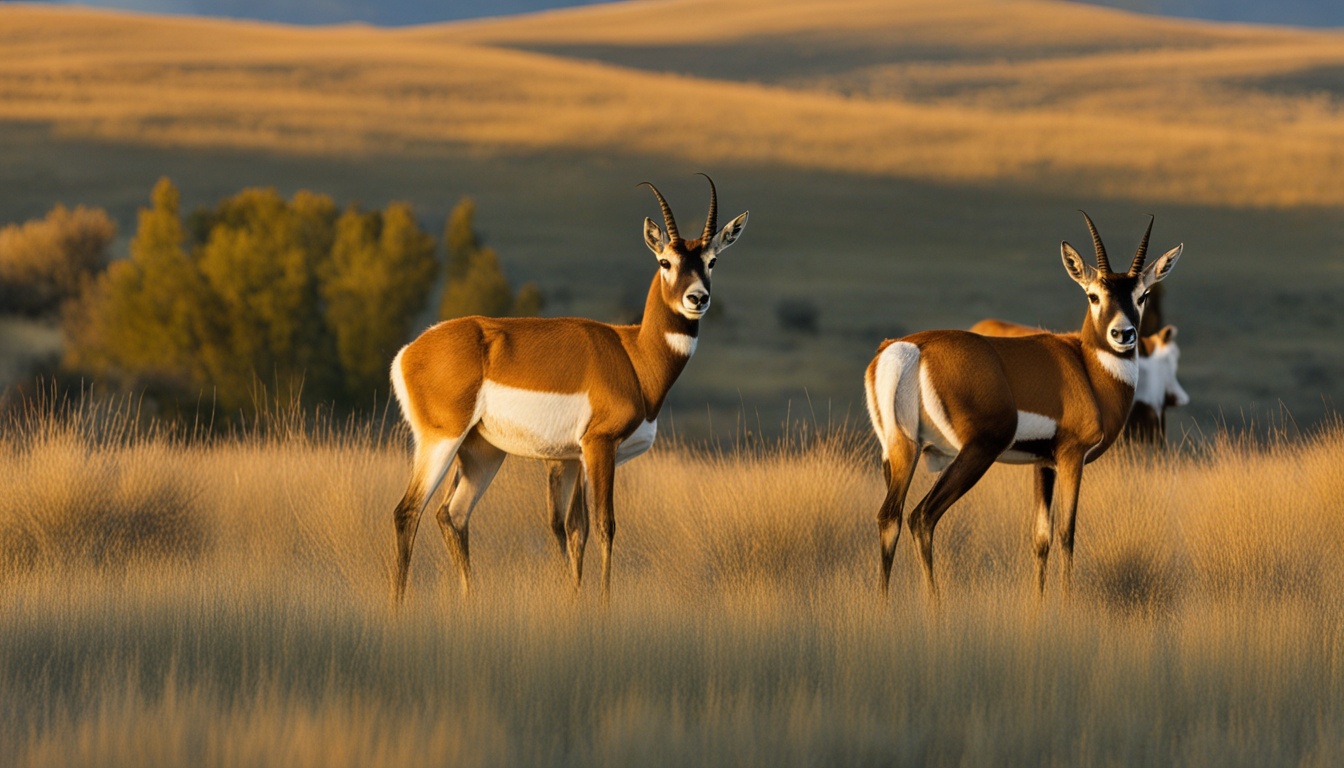Have you ever wondered how often bald eagles eat? These majestic birds of prey are not only a symbol of strength and freedom but also an important part of the ecosystem. Understanding their feeding habits is crucial to appreciating their role in nature. Let’s take a closer look at how often bald eagles eat.
As apex predators, bald eagles have a diverse diet and can adapt to new food sources easily. However, they primarily feed on fish, making up around 70-90% of their diet. They also eat small mammals, birds, and carrion when necessary.
Key Takeaways
- Bald eagles have a diverse diet but primarily feed on fish
- Understanding their feeding habits is crucial to appreciating their role in nature
- As apex predators, bald eagles can adapt to new food sources easily
Bald Eagle Diet: What Do They Eat?
As apex predators, bald eagles have a varied diet that is primarily composed of fish. Their preferred catch includes salmon, trout, and herring, which are relatively easy to catch thanks to their dense populations. However, bald eagles are opportunistic hunters and will feed on small mammals, waterfowl, and carrion in absence of fish.
Bald eagles may also scavenge for food or steal prey from other birds. This behavior has made them somewhat notorious, and they are sometimes referred to as “kleptoparasites” because of their tendency to steal food from others.
Interestingly, bald eagles are known to have a unique feeding behavior where they can go without food for several days. They can store food in their crop, a specialized part of their digestive system, which enables them to survive during periods of food shortage.
Bald Eagle Diet: What Do They Eat? Examples
| Food Type | Examples |
|---|---|
| Fish | Salmon, Trout, Herring |
| Small Mammals | Rabbits, Squirrels |
| Waterfowl | Ducks, Geese |
| Carrion | Dead fish, deer, and other animals |
Feeding Patterns of Bald Eagles: How Often Do They Hunt?
Bald eagles are apex predators and have a diverse diet that includes fish, small mammals, birds, and even carrion. Their hunting patterns vary depending on the availability of food and the breeding season.
During the breeding season, bald eagles are known to hunt more frequently to feed their growing chicks. They may hunt multiple times a day, with each hunt lasting up to an hour.
Outside of the breeding season, bald eagles may hunt less frequently, sometimes going several days without catching any prey. This may be due to a decrease in prey availability or a change in migration patterns.
Environmental Factors Affecting Feeding Patterns
Bald eagle feeding patterns are also influenced by environmental factors. Weather conditions, such as heavy rainfall or snow, can make it more difficult for eagles to hunt, forcing them to conserve energy and go longer periods without food.
Changes in water levels and temperatures can also impact the availability of fish, a staple in the bald eagle diet. In areas where fish populations are low, bald eagles may have to hunt more frequently or switch to other prey.
Successful Hunting and Feeding Habits
Bald eagles are highly skilled hunters and have developed unique feeding habits to adapt to their environment. They are known for their impressive aerial dives and can spot prey from great distances.
After catching their prey, bald eagles will often fly to a nearby perch or branch to eat. They may also take their prey to a secluded location to avoid competition from other eagles.
Conclusion
Understanding the feeding patterns of bald eagles is crucial to their conservation and the preservation of their habitats. By protecting their food sources and understanding how their eating habits vary throughout the year, we can ensure the continued success of these majestic birds.
Bald Eagle Feeding Behavior: Hunting Techniques and Strategies.
When it comes to hunting techniques, bald eagles are truly magnificent birds of prey. Their impressive aerial skills and keen eyesight make them expert hunters, capable of spotting prey from great distances. They typically use two main hunting strategies: perch hunting and aerial hunting.
In perch hunting, bald eagles will sit quietly on a high perch, usually a tree or rock, waiting for prey to pass by. Once they spot a potential meal, they will swoop down and catch it in their sharp talons. This technique works best for small prey, such as rodents and fish.
Aerial hunting, on the other hand, involves the eagle soaring high in the sky, scanning the ground for prey. Once the eagle spots a suitable target, it will dive down at incredible speeds, using its powerful talons to snatch the prey mid-flight. This technique is more effective for larger prey, such as rabbits and other birds.
Interestingly, bald eagles have also been observed engaging in cooperative hunting behavior. When food is scarce, eagles will work together to catch larger prey. One eagle will chase the prey toward another eagle, who will then take over and continue the pursuit, ultimately catching the prey.
“Bald eagles are truly magnificent birds of prey.”
Frequency of Food Consumption in Bald Eagles: Factors Affecting Their Eating Patterns
Have you ever wondered how often bald eagles eat? Well, their food consumption frequency is influenced by various factors.
Firstly, environmental conditions play a critical role in determining how often bald eagles will hunt for food. For instance, during winter when most water bodies freeze, eagles may have to search for food farther away from their nests. This means they may hunt less frequently as they must travel longer distances.
Secondly, food availability is also a critical factor that influences how often bald eagles eat. If prey is abundant, eagles will hunt and feed more often. However, if prey is scarce, they may hunt less frequently.
Lastly, the breeding season also affects the frequency of food consumption in bald eagles. Breeding pairs work tirelessly to feed their young. This means they have to hunt more frequently to ensure their offspring are well-fed.
Bald Eagle Feeding Frequency: Seasonal and Regional Variations.
As an adaptable predator, bald eagles adjust their feeding patterns to the changing environmental and seasonal conditions. Their feeding frequency and diet can vary significantly based on factors such as prey availability, migration patterns, and breeding season.
In some regions, bald eagles may feed multiple times a day, while in others, they may feed only every few days. During breeding season, their feeding frequency typically increases as they need to provide food for their growing chicks.
Hunting Habits in Different Regions
Geographic variations in prey availability and migration patterns can significantly impact bald eagles’ diet and feeding frequency. For instance, eagles living along the coast have access to a steady supply of fish and marine mammals, while those living inland may feed on small mammals, birds, and reptiles.
In the Arctic, where bald eagles live year-round, they primarily feed on fish, seabirds, and small mammals. During winter, they may scavenge on carrion to supplement their diet.
Seasonal Changes in Diet and Frequency
Bald eagles’ feeding patterns can also change based on the seasonal availability of their prey. For instance, during winter when water bodies freeze in some regions, bald eagles may have to switch from fish to small mammals, such as rabbits or squirrels.
During the breeding season, bald eagles need to provide enough food for their chicks. This may cause them to hunt more frequently and expand their diet to include small birds, reptiles, and mammals.
Impacts of Climate Change
Climate change can significantly impact bald eagles’ feeding patterns as it alters their habitats and influences prey availability. For example, rising temperatures can cause fish to migrate to cooler waters, making it difficult for eagles living in warmer waters to find food.
Additionally, changes in temperature and precipitation patterns can also affect the breeding season for bald eagles, leading to fluctuations in their feeding frequency.
Understanding bald eagles’ feeding patterns and how they adapt to changing conditions is important for their conservation and management. By protecting their habitats and preserving their food sources, we can ensure the survival of these majestic birds.
Bald Eagle Reproduction and Its Impact on Food Consumption
If you want to truly understand how often bald eagles eat, you need to consider their reproductive cycles. Bald eagles are monogamous birds that typically mate for life. They typically mate in the early spring, and their eggs hatch about a month later.
During this time, bald eagles become very territorial and protective of their nests. This means they may need to hunt more frequently to ensure they have enough food to feed their chicks. Once the chicks hatch, they grow very quickly and require a lot of food. Bald eagles will need to hunt more often during this time to keep up with their growing chicks’ demands.
As the chicks get older, they will start to leave the nest and hunt on their own. This means the adult bald eagles will have fewer mouths to feed, and their hunting frequency will likely decrease.
Overall, bald eagle reproduction has a significant impact on their food consumption habits. During breeding season and while their chicks are young, they will need to hunt and eat more frequently to ensure their survival.
Bald Eagle Feeding Rituals: Social Behavior During Mealtime
When it comes to mealtime, bald eagles exhibit a variety of social behaviors that demonstrate their hierarchical structure. Adult eagles typically eat first, followed by younger birds and finally, the chicks. This pecking order ensures that the adult eagles get the largest share of the food and the chicks get enough to survive.
During mealtime, bald eagles also communicate with each other through a variety of vocalizations. These include screeches and screams, which are used to warn off other eagles and protect their food source.
Interestingly, bald eagles have been observed using tools to aid in their feeding. They will sometimes drop large fish from a height onto rocks in order to break them into smaller, more manageable pieces. This behavior demonstrates their intelligence and adaptability in the wild.
Overall, the feeding rituals of bald eagles provide insight into their complex social structure and survival strategies. By understanding these behaviors, we can better appreciate the majesty and importance of these remarkable birds.
The Role of Bald Eagles in the Ecosystem: Food Chains and Conservation
Understanding how often bald eagles eat is crucial to appreciating their significance in the ecosystem. As apex predators, bald eagles play a crucial role in maintaining the balance of various food chains.
At the top of the food chain, bald eagles help regulate the population of their prey, ensuring that they do not cause an imbalance in the ecosystem. They also contribute to maintaining the health of the environment by consuming carrion and other dead animals.
However, the population of bald eagles has been threatened in the past due to habitat loss, pollution, and hunting. Conservation efforts have been put in place to protect their habitats and encourage their population growth.
Efforts such as the Endangered Species Act and the Bald and Golden Eagle Protection Act have been instrumental in protecting the bald eagle population. Additionally, habitat restoration and education programs have also played a significant role in preserving these majestic birds.
By protecting the bald eagle population, we are also taking a step towards maintaining the balance of various food chains and preserving the health of our environment. The responsibility lies with all of us to ensure that these birds continue to thrive and contribute to the ecosystem in their unique way.
Threats to Bald Eagle Food Sources: Human Interference and Environmental Factors
Bald eagles are natural apex predators that play a vital role in maintaining ecological balance. However, their food sources are often threatened by human interference and environmental factors.
One of the primary threats to bald eagle food sources is habitat loss. Human activities such as construction, logging, and land development can destroy the habitats of their prey, reducing their numbers and making it difficult for bald eagles to find food.
Another significant threat to bald eagle food sources is pollution. Water pollution can harm fish populations, which are a primary food source for bald eagles. Pesticides used in agriculture and other industries can also poison bald eagles and their prey.
Overfishing and commercial fishing practices can also reduce the availability of prey for bald eagles. Commercial fishing can cause the depletion of fish populations, making it harder for eagles to find food.
The illegal killing of eagles and their prey, such as deer and small mammals, is also a significant threat to bald eagle food sources. Hunting and poaching can disrupt the balance of the ecosystem, reducing the numbers of prey available for bald eagles to eat.
It is essential to preserve the habitats of bald eagles and their prey to protect their food sources. Conservation efforts such as habitat restoration, water pollution control, and regulation of commercial fishing can help ensure the survival of bald eagles by securing their food sources.
Bald Eagle Feeding Research: Scientific Studies and Findings
If you’re curious about the eating habits of bald eagles, you’re not alone! Scientists have conducted several studies to better understand how often these majestic birds eat.
One study found that adult bald eagles consume approximately one pound of food per day, while juveniles eat slightly less at around 0.75 pounds per day. Another study found that bald eagles tend to consume larger prey items during the breeding season, likely due to the increased energy demands of caring for their young.
Scientists have also discovered that bald eagles are opportunistic hunters, meaning they will consume a variety of prey depending on what is available in their environment. This adaptability has allowed them to thrive in a range of habitats, from coastal areas to inland forests.
In addition to understanding their eating habits, researchers have also studied the impact of human interference on bald eagle food sources. One study found that habitat destruction and pollution can negatively affect the availability of prey for these birds, highlighting the importance of conservation efforts to protect their habitats.
Overall, scientific studies have helped shed light on the eating habits of bald eagles and the factors that influence their food consumption. By continuing to research and understand these magnificent birds, we can better appreciate their vital role in maintaining ecological balance.
Conclusion
You now have a better understanding of how often bald eagles eat and their eating habits. These majestic birds are adaptable apex predators with a preference for fish and other small prey. Factors such as environmental conditions, prey availability, and breeding cycles affect their eating patterns.
Bald eagles play an important role in maintaining ecological balance, and it is crucial to protect their habitats and food sources from human interference and environmental factors. By appreciating these birds and their vital role in nature, we can contribute to their conservation efforts.
Can the Diet of a Bald Eagle Impact its Use in Falconry?
The diet of bald eagles used in falconry plays a significant role in their performance. A balanced and varied diet helps maintain their overall health and ensures optimal use in falconry. Providing them with suitable prey species allows them to develop their natural hunting instincts, increasing their effectiveness during falconry activities.
FAQ
Q: How often do bald eagles eat?
A: Bald eagles typically eat once every day or two, but the frequency can vary depending on factors such as prey availability and breeding season.
Q: What do bald eagles eat?
A: Bald eagles primarily eat fish, but they also consume small mammals, birds, and carrion.
Q: How often do bald eagles hunt?
A: Bald eagles hunt on a daily basis, using their excellent vision and aerial hunting skills to spot prey from great distances.
Q: What are the hunting techniques of bald eagles?
A: Bald eagles employ various hunting techniques, including soaring above water bodies, perching on trees or rocks, and diving to catch fish.
Q: What factors affect the frequency of food consumption in bald eagles?
A: The frequency of food consumption in bald eagles is influenced by environmental conditions, prey availability, and breeding season.
Q: Are there seasonal and regional variations in bald eagle feeding frequency?
A: Yes, bald eagle feeding frequency can vary depending on the season and region. Differences in prey availability and migration patterns contribute to these variations.
Q: How does bald eagle reproduction impact their food consumption?
A: Bald eagle reproduction affects their food consumption as breeding cycles and the need to feed growing chicks increase their hunting and feeding efforts.
Q: What is the social behavior of bald eagles during mealtime?
A: Bald eagles exhibit hierarchical behavior during mealtime, with dominant eagles often asserting their dominance and defending their food.
Q: What is the role of bald eagles in the ecosystem?
A: Bald eagles play a crucial role in maintaining ecological balance as top predators in the food chain. They help control populations of prey species and contribute to healthy ecosystems.
Q: What are the threats to bald eagle food sources?
A: The main threats to bald eagle food sources include human interference, habitat loss, pollution, and changes in prey abundance due to environmental factors.
Q: Are there any scientific studies on bald eagle feeding habits?
A: Yes, scientific studies have been conducted to understand bald eagle feeding habits. These studies provide valuable insights into their eating behaviors and contribute to conservation efforts.











